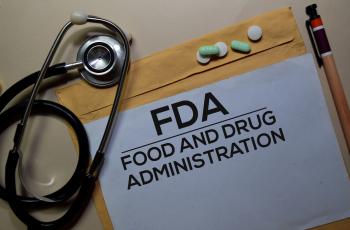News Updates - 8/6/2021
With this series we will bring you the latest news in diabetes advocacy and policy. This week we cover news updates in the FDA, insurance and access to care, stigma and society, and government and legislation.
FDA
FDA approves first interchangeable biosimilar insulin product for treatment of diabetes
The US Food and Drug Administration (FDA) has approved the first interchangeable insulin. Semglee can now be substituted for glargine (Lantus), without needing approval from one’s doctor or prescriber.
Why it matters: Out of the insulin options available, Semglee is the cheaper option, though still relatively expensive at almost $100 per vial. About one in four people with diabetes have reported rationing insulin due to the high cost, which means they are not getting the diabetes care that they need. While Semglee is a step forward in insulin affordability, more needs to be done so everyone with diabetes can access this necessary drug.
What you can do: If you are having trouble paying for your insulin, read here to learn about the options available.
Insurance and Access to Care
Virtual care becomes a common cause in Congress
Congress seems in agreement over allowing Medicare to continue paying for telehealth visits after the pandemic is over. Telemedicine coverage policies, originally implemented during the beginning of COVID-19, are set to expire once the official public health emergency ends. Legislators are still unclear what exactly Medicare will cover and pay for, as some worry that an expansion of telehealth could increase health spending too much.
Why it matters: Many people sought telehealth visits to seek care throughout the pandemic. Virtual medical services helped people with diabetes stay connected with their providers while maintaining social distancing protocols. Even after the public health emergency ends, continuing telehealth coverage will help people who find it challenging to attend their appointments in person get the care they need.
States and insurers resurrect barriers to telehealth
The expansion of telehealth in response to the COVID-19 pandemic is starting to phase out. State-issued emergency declarations and insurer policies are coming to an end, which is making telehealth visits more expensive and difficult to access. As telehealth geographic restrictions are reinstated, some patients have gone to great lengths to maintain their telehealthcare.
Why it matters: Telehealth was vital in maintaining access to healthcare during the COVID-19 pandemic, but telehealth can significantly improve diabetes care beyond the pandemic. Telemedicine makes it easier to access healthcare providers and reduces transportation and cost barriers. All people with diabetes should have the option to access healthcare from home and the expansion of telehealth should not end with the pandemic.
Though millions are at risk for diabetes, Medicare struggles to expand prevention program
Experts in diabetes have noted several issues to the Medicare Diabetes Prevention Program: it does not provide sufficient funds for individuals to go through the entire two year program, it does not adequately publicize the program, and it typically does not provide online classes (except during the pandemic). To increase access to the program, the Centers for Medicare and Medicaid Services (CMS) has proposed several changes. The CMS will shorten the program to one year, enhance reimbursement, and waive a $599 fee that groups originally had to pay. Several experts still want virtual classes to expand participation and reduce disparities, but that has not been approved.
Why it matters: According to the CMS, 16 million people on Medicare are eligible for diabetes prevention programs, but only 3,600 people have participated in the program since it began in 2018. The Diabetes Prevention Program Outcomes Study showed that high-risk individuals can potentially prevent type 2 diabetes largely through diet and exercise, and perhaps even reduce the risk of complications. With adequate funding and resources, these prevention programs can reduce the risk of diabetes for millions of people.
California makes it easier for low-income residents to get and keep free health coverage
California’s newly approved state budget will eliminate the “asset test” for the 2 million Californians enrolled in both Medi-Cal and Medicare. The asset test requires people to have assets that are valued below a certain threshold to remain on Medi-Cal, even if those assets are limited. Now, financial eligibility for Medi-Cal will be solely based on income. This change will help the many Californians who don’t earn enough to cover the high costs of senior home care, or other life expenses. Additionally, everyone aged 50 and over will be eligible for Medi-Cal, regardless of immigration status. These changes will go into effect in 2022.
Why it matters: An estimated 15.5 million adults in California (55%) have diabetes or prediabetes. To address the diabetes epidemic in California, access to affordable, quality healthcare is imperative. The removal of the asset test for Medi-Cal eligibility reduces barriers to care for low-income Californians. This will make it easier for people with diabetes to access care in California and likely reduce rates of undiagnosed diabetes in the state.
More than 2 million sign up during ObamaCare special enrollment period
More than 2 million people have signed up for health insurance through the Affordable Care Act (ACA) during the special enrollment period. The number has continued to rise since the special enrollment period began on February 15 and has increased the number of enrollees to a record high, though the final count has not yet been determined. The special enrollment period is set to end on August 14.
Why it matters: Since its enactment, the ACA has proven to help people with diabetes get the treatment that they need by expanding Medicaid as well as free preventive services. Additionally, the ACA has provided health coverage for many people who have lost their employer-based plans this past year.
What you can do: You can see if you qualify and sign up here before August 14.
Black children less likely to start, continue CGM after type 1 diabetes diagnosis
Non-Hispanic Black children are less likely to start on a continuous glucose monitor (CGM) within one year of diabetes diagnosis, compared to non-Hispanic white children. Among children with type 1 diabetes, 51% of non-Hispanic white children used a CGM one year after diagnosis, compared to 35% of Hispanic children and 28% of non-Hispanic Black children.
Why it matters: CGMs have been shown to improve time in range and diabetes health outcomes. Consistent access to CGMs is important, but underserved populations do not have equal access to these critical devices. Notably, race and ethnicity, annual family income, and health insurance type are strongly associated with CGM use among children with type 1 diabetes. Reducing disparities in CGM use, along with other diabetes technologies, can improve diabetes outcomes.
Missouri Supreme Court rules in favor of Medicaid expansion
The Missouri Supreme Court has ruled in favor of Medicaid expansion, after Governor Mike Parson and the rest of the state legislature declined to provide funding for it. Missouri voters approved the expansion of Medicaid under the Affordable Care Act in 2020, so the ruling will comply with their support.
Why it matters: Missouri would be the 38th state to expand Medicaid, and would cover about 275,000 additional uninsured people. The Missouri Supreme Court decision also comes after the American Rescue Plan promised financial incentives for states to expand Medicaid, and the next Senate budget deal is likely to add on to those incentives. This is good news for people with diabetes, as Medicaid expansion has proven to improve access to diabetes medications and overall enhance care.
In a study of over 2 million people on the impact of Medicare eligibility on racial and ethnic health disparities, researchers found that Medicare eligibility at age 65 is associated with reduced disparities in insurance access, access to care, and health outcomes. Researchers surveyed participants before and after they turned 65 and found that Medicare eligibility reduced disparities in insurance coverage by 53-51 percent depending on the racial/ethnic group. Proportion of participants who had poor health also reduced by 2.6-3.8 percent depending on the racial/ethnic group.
Why it matters: While the Medicare eligibility age is currently 65, some federal policymakers are advocating to reduce Medicare eligibility to age 60 or 55. Research on the impact of Medicare on reducing health disparities is valuable in understanding the impact of accessible healthcare for older Americans who have higher rates of diabetes than young people. Decreasing the Medicare eligibility age would hopefully further address health disparities and help millions of people with diabetes access affordable, quality care.
Legislation
Senate budget deal to provide new funding for Medicare, Medicaid, ObamaCare
The $3.5 trillion budget proposed by Senate legislators will include several major health care initiatives that include expanding Medicare and Medicaid and extending Affordable Care Act (ACA) subsidies. The budget package would also provide funding to cover dental, hearing, and vision under Medicare. Several legislators have proposed lowering prescription drug prices to partially pay for these initiatives.
Why it matters: Medicaid expansion has been shown to improve access to diabetes medications and overall improve the quality of care. There are currently only 12 states that have not expanded their Medicaid programs, so the budget deal aims to incentivize those states to do so. If approved, the deal would also lower the price of prescription drugs, which would help more people with diabetes afford their medications.
Time in Range
Adding CGM data to EHR could boost use in primary care diabetes management
In a pilot study by the International Diabetes Center and Abbott, clinicians provided people with diabetes a FreeStyle Libre CGM, which would then upload data into their electronic health record (EHR), to measure the impact on people’s health. The integrated data metrics would allow doctors to view time in range, more easily personalize care, and improve the quality of care for people with diabetes.
Why it matters: CGM data and EHRs are typically on completely separate platforms, but this new process would enable doctors to easily access all of the data at once and tailor treatment for people with diabetes. Healthcare providers could track glucose trends and help people better manage their diabetes.
Stigma & Society
New Pixar movie features girl with diabetes
Blink and you’ll miss the kid with diabetes in Pixar’s Turning Red trailer
The new Pixar movie’s trailer features a girl wearing a continuous glucose monitor (CGM), and an insulin pump on her waistband. This is the first time a Pixar movie has shown a character with diabetes. Someone commented on the trailer, “When I see people in mainstream [media] with diabetes gear on, I immediately sob. It’s like an adult me says to a 9-year-old newly-diagnosed me, ‘Look! You aren’t the only one!’ And I just think about all the little babies with type 1 who are so strong and feel so validated seeing it.”
Why it matters: To reduce diabetes stigma, it’s important for people, especially at a young age, to see themselves represented in the media to show that they are not alone. It can be especially challenging for children with diabetes, as they navigate their changing identity and are worried about being “different” from everybody else. Normalizing the conversation and showing representation can help young people with diabetes feel more confident in their bodies.
True Cost of Food: Measuring What Matters to Transform the US Food System
According to a report by The Rockefeller Foundation, the true cost of food is at least $3.2 trillion a year. The report states that human health impacts are the biggest hidden cost of the food system, with close to $1.1 trillion per year in health-related costs. A significant portion of these costs--$604 billion--are related to “diet-related diseases” such as diabetes. In addition, poor nutrition is now the leading cause of poor health in the United States. The majority of adult hospitalizations were “attributable to one of four pre-existing conditions: obesity, hypertension, diabetes, and heart failure, in that order.”
Why it matters: The report notes that if we can expand access to healthy food, we can reduce the prevalence of diseases like diabetes, improve community health outcomes, and decrease many health-related food costs. Currently, people with diabetes disproportionately experience food insecurity, and COVID-19 has only worsened these trends. We need to take a holistic approach--through public policy, private sector investments, health screening, and more--towards making food affordable and accessible to underserved communities.
What you can do: If you are experiencing food insecurity, read here to learn about the resources available.
A coming wave of diabetes? The link with COVID-19
Researchers are investigating an increase in new-onset hyperglycemia lasting months after infection in people hospitalized with COVID-19. A study found that about half of patients admitted to the hospital for COVID-19 during the start of the pandemic had new, high levels of blood sugar, or hyperglycemia. About 35 percent of people with higher blood sugar levels had hyperglycemia for at least six months after infection, even though they did not have diabetes previously. Some patients also had higher glucose levels after eating and abnormal hormones in their pancreas, even after they had COVID-19.
Why it matters: COVID-19 has deeply impacted the diabetes community. If infected, people with diabetes have a higher risk for severe COVID-19 complications and one study found that nearly a third of COVID deaths were among people with diabetes. High blood sugar in people with COVID-19 is an indication that COVID and diabetes could be more closely linked than we originally assumed. More research is needed on the relationship between diabetes and COVID-19 to better understand the pandemic’s impact on the community.
Managing type 1 diabetes: Voices of the underserved
In a series of focus groups, several doctors explored the experiences of people with type 1 diabetes in underserved communities. Participants in the study talked about how they were repeatedly denied a continuous glucose monitor, despite having experienced severe diabetes-related complications in the past. They also identified “unsympathetic endocrinologists” as a top barrier to adequate diabetes care. According to Dr. David Maahs of Stanford Medicine, the goal of this project is to “equip more providers with the relevant knowledge so patients in disadvantaged communities receive better care than what they currently have.”
Why it matters: Diabetes disproportionately affects people of color and low-income individuals due to disparities in access to food, housing, and healthcare. Hispanic, Black, Asian, and Native American individuals receive less quality diabetes care, compared to white individuals. These trends in care ultimately increase complications and mortality rates. Implicit bias and racism by health care professionals need to be addressed to ensure equitable access to quality care for everyone.
CDC: Vaccinated people should now wear masks in high transmission areas
In response to the increased spread of the Delta Variant, the Centers for Disease Control and Prevention (CDC) has stated that fully vaccinated people should wear masks in certain situations. These include in public, indoor settings in areas of the country with substantial or high levels of transmission, which are currently in much of the South and West.
Why it matters: If infected, people with diabetes have a higher risk for severe COVID-19 complications and one study found that nearly a third of COVID deaths were among people with diabetes. All people should take necessary precautions to prevent the spread of COVID-19. This will help protect people with diabetes and obesity and other high-risk populations in the US.
What you can do: If you have not already, get vaccinated for COVID-19. Look here for more information on who should mask up.


